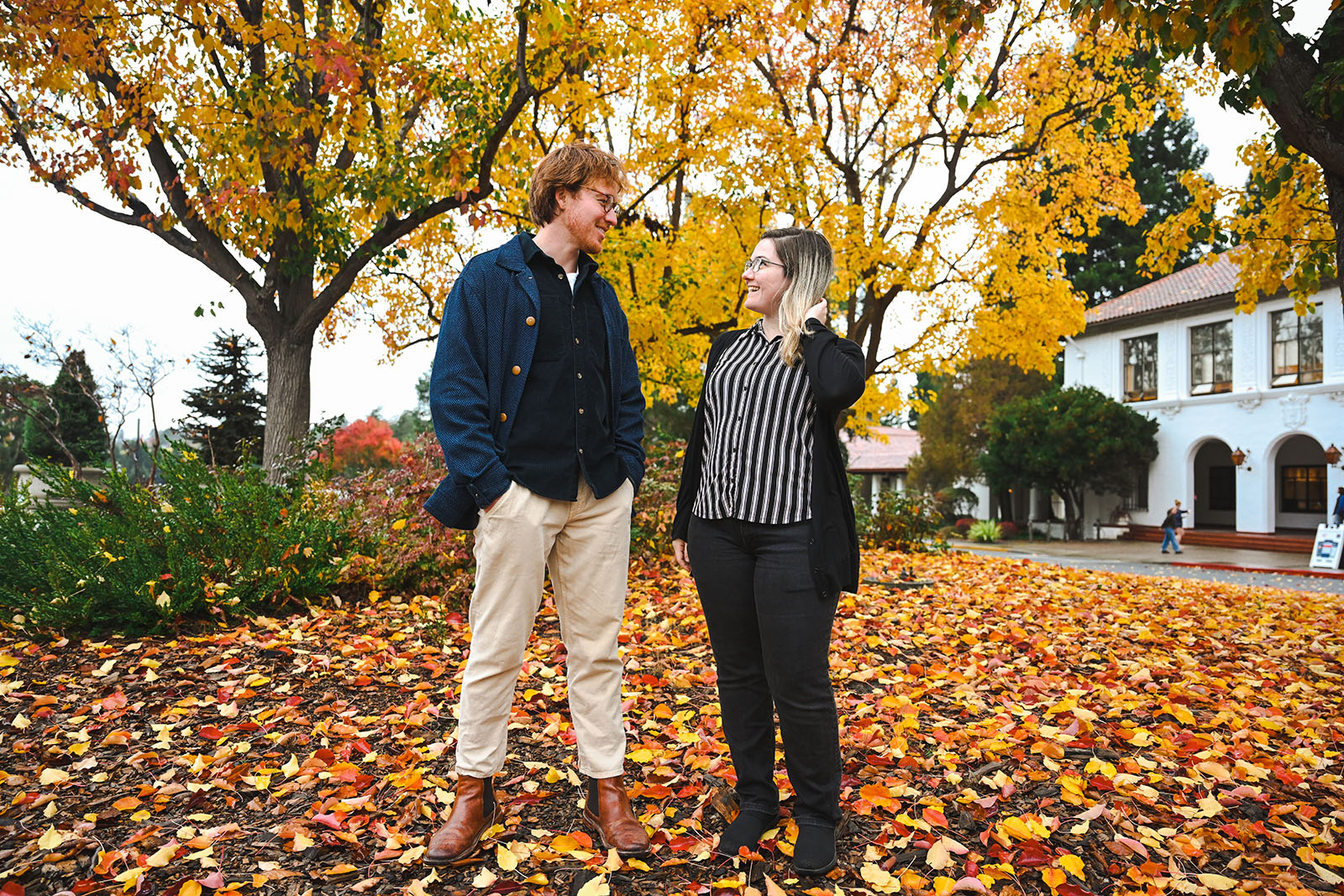
From enlistment to fine arts degrees: Ryan Harper, left, and Kindra Stewart are taking advantage of the GI Bill to master the art of writing. / Photo by Soren Peterson
Making Meaning as Veterans and Writers
Kindra Stewart MFA ’24 and Ryan Harper MFA ’24 are graduate students in the MFA in Creative Writing Program. Their unique backgrounds have sparked new ways of sharing and storytelling in the Saint Mary’s community.
This past November, students, faculty, and staff gathered on a Wednesday afternoon in Hagerty Lounge on the Saint Mary’s campus for something new: Thank You For Your Service: A Literary Event, part of celebrations during the 2023 Veterans Week. Undergrads and Creative Writing program graduate students read excerpts from seven contemporary writers who served in the US military. There were veterans in the audience, and three of the readers were veterans themselves, two of whom are working on their master of fine arts in Creative Writing.
Kindra Stewart MFA ’24 is one of those veterans and writers. She served in the Air Force before enrolling at Saint Mary’s. Stewart also organized the reading as a collaboration between the Creative Writing Department and Veterans and Graduate Support Services, where she serves as an academic resources manager.
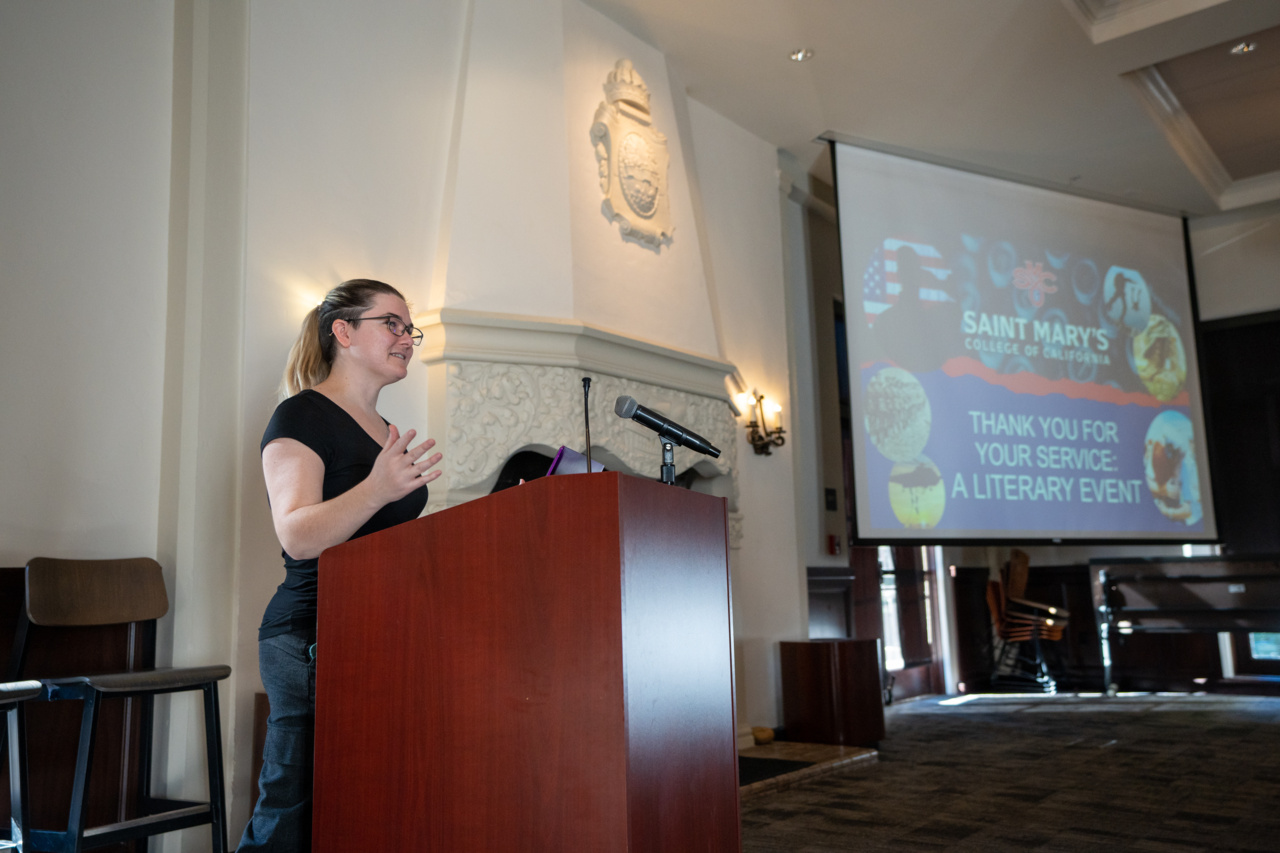
Among the readers was Isa Maloof MFA ’25, a first-year MFA student working in poetry. She read poems from Graham Barnhart’s book The War Makes Everyone Lonely, in which Barnhart explores the isolation and loss he experienced during his service as a US Army medic. Lucas Maas ’24, who served in the Marine Corps before enrolling at Saint Mary’s, read a section of veteran Shane Dunn’s “Rapid Cycling,” a work of nonfiction published in The Iowa Review, and two poems by Iraq veteran and creative activist Chantelle Bateman. As a student in the MFA program myself, I read a section from Tim O’Brien’s seminal short story “The Things They Carried,” a resonant, almost hypnotic list of physical and metaphorical objects that Vietnam War soldiers brought with them through the jungle.
Stewart wrapped up the event by reading from Anthony Moll’s Out of Step: A Memoir—a section where Moll, an Army veteran, recounts the suicide of a friend and fellow veteran. Stewart’s voice was strong, unwavering as she read. Later, though, she admitted to me that her paper was speckled with a few tears.
“Talent, commitment, and desire”
Stewart’s role has allowed her to bolster support for the veterans community on campus in important ways. When she arrived, she says, “it was difficult for veteran students to find resources and for military-affiliated Gaels to find their community.” Organizing programming like the reading event is one way she brings together veteran and non-veteran students alike.
Stewart enlisted in the Air Force when she was 25, after deciding that she wanted to pursue higher education. “My husband at the time was a Marine Corps veteran and was using his GI Bill to go to school. I was struggling with my sense of belonging in the world and didn’t have a connection to what I wanted to do,” she says. “But education was something that was important to me.”
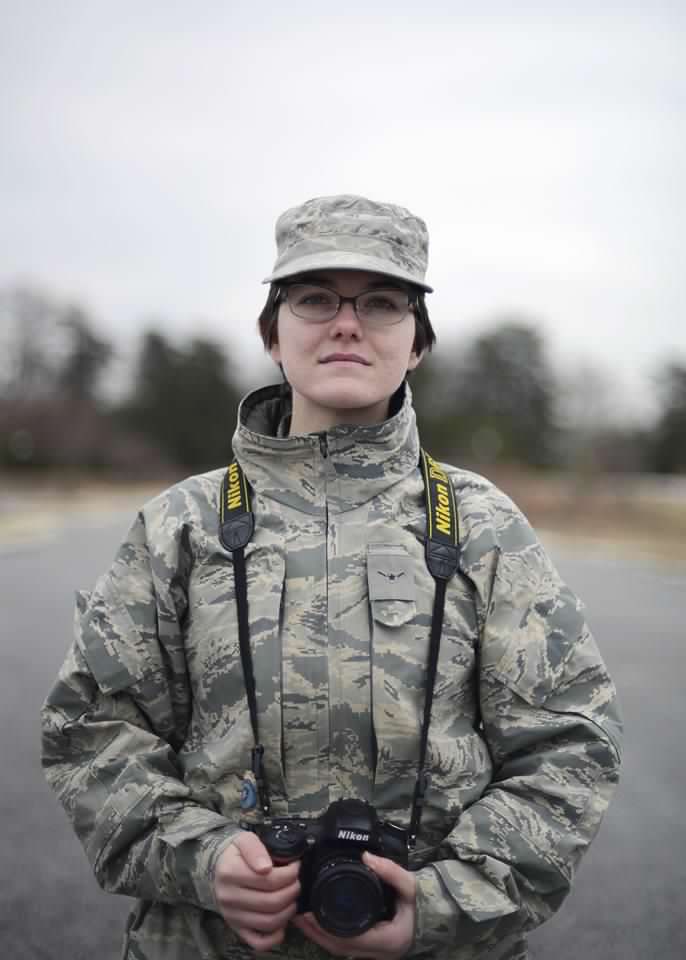
Six weeks into her basic training, she found out she would be working as a photojournalist, a position very few recruits get. Stewart attended the Defense Information School in Fort Meade, Maryland, where she learned to craft stories through various styles of journalism and photography. “I was fascinated by all of it, and my interest in writing re-ignited itself,” she says.
Years before, Stewart had a misguided teacher who nearly snuffed out her interest in writing. “Writing was something I always wanted to do, and I was involved in a lot of creative writing spaces growing up,” Stewart says. “In sixth grade, I wrote a piece about my life growing up in southeast Texas and some of the bizarre things that happened there. My teacher pretty much shamed me and said that I was writing fiction and not nonfiction—that my own story was invalid and I was making it up. I was so upset that I decided I was never going to write again.”
Two years into her four-year enlistment in the Air Force, Stewart received a medical discharge. But the lessons she learned as a photojournalist stayed with her. As she was going through post-traumatic stress disorder treatment, one of her doctors asked what brought her joy from her job. “I told her I enjoyed telling the stories of the other Airmen, and she asked if I had ever thought about telling my own story,” she says.
That question stuck with Stewart. In 2020, she enrolled at New Mexico State University to study English and took her first college-level creative writing course. Her professor encouraged her to apply to a master of fine arts program, recognizing her creative drive as something to be cultivated. “There are a lot of people who think that they want to be writers,” he told her, “but there’s a huge difference between talent, commitment, and desire.”
“He had a strong feeling that I had all three of those things,” Stewart says.
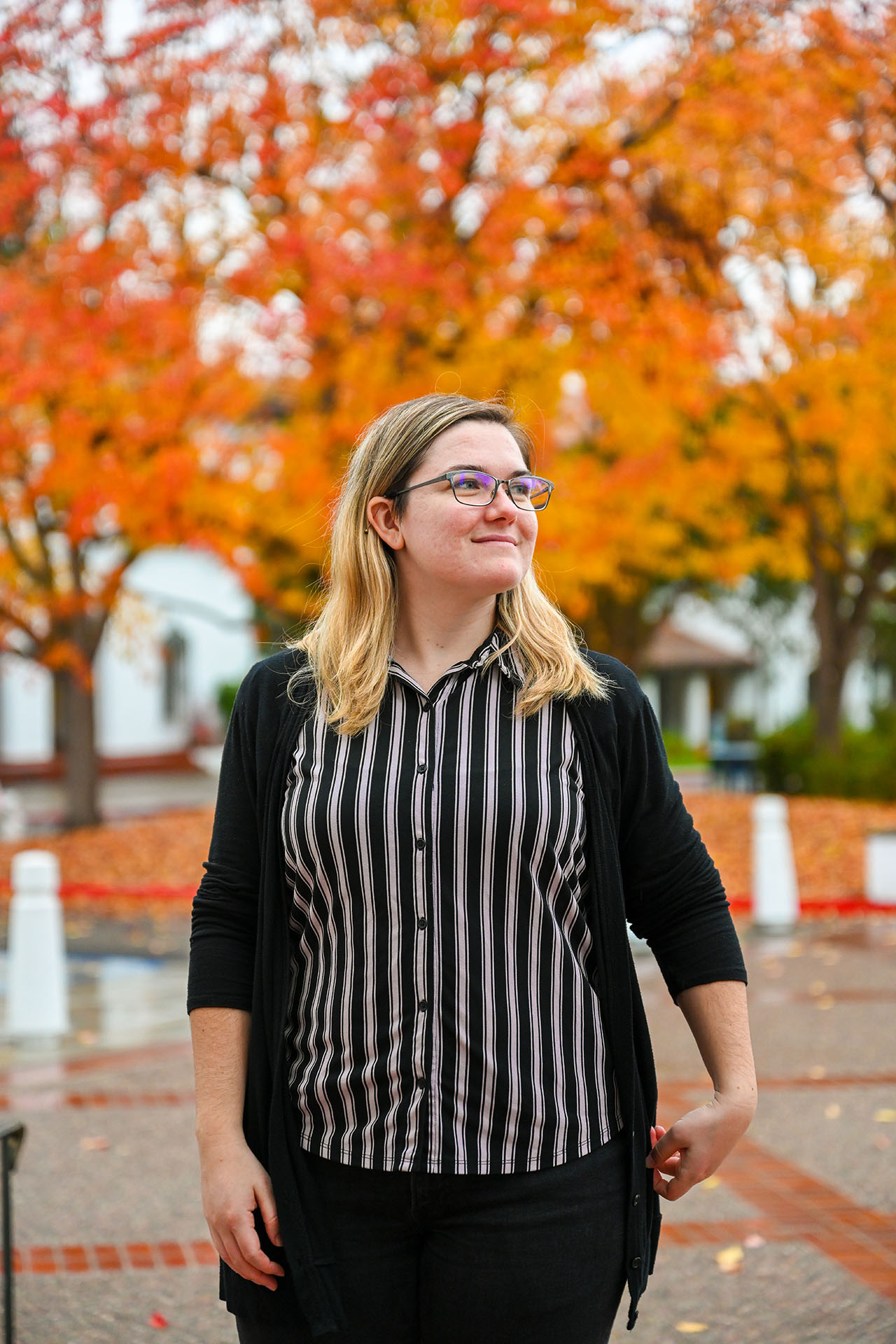
Learning to tell a story
Another student in the MFA program who served in the military before pursuing higher education is Ryan Harper MFA ’24, also a second-year student in fiction. It was his time in the Navy that set him on this path. These days his shoulder-length hair, cardigan, and wire-framed glasses stand in stark contrast to the buzzcut and uniform he wore during his service.
“I don’t self-identify as a veteran very strongly,” he admits, “but it’s definitely a huge part of my history and it’s something I’m willing to talk about.” Yet that experience provides the foundation for his MFA thesis, a semi-autobiographical short story collection. He opened Thank You For Your Service reading from “Gray Days,” one of his own stories. Narrated by a photojournalist in the Navy, it explores the machine-like qualities of the military system and how the narrator’s photographs are being used to contribute to the Navy’s larger narrative.
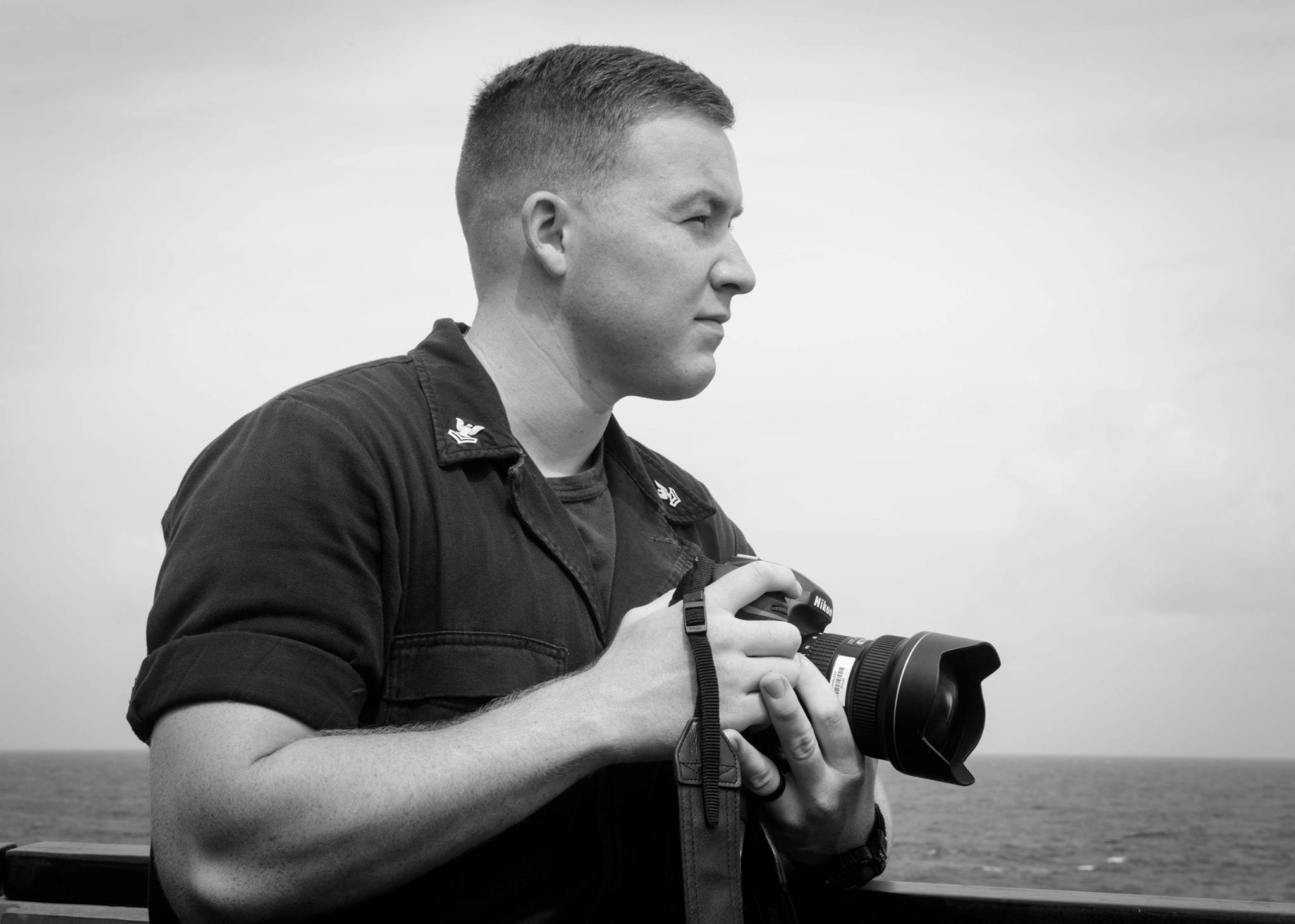
Harper was raised for the most part just outside of Fresno, in California’s Central Valley. “My family doesn’t really have a narrative of what you do after high school,” he says, “so I enlisted in the Navy when I was 17 and was in the Delayed Entry Program for a year until I graduated.”
The Navy gave him the choice of three jobs, but one in particular stood out to him. “There was a job called ‘Mass Communication Specialist: Tell the Navy’s Story,’ which sounded pretty cool. It’s the smallest rate—the Navy’s term for job—for enlisted, and it’s rare for it to come up; it was a nice stroke of luck.” After boot camp, Harper was sent to the Defense Information School—the same school Stewart attended in Maryland—where he was trained in photography, journalism, videography, design, and print media.
“The Navy fuses all of those skills into one position to save money,” Harper says. “You might be asked to do a photo story, write a press release, take portrait photos of officers and enlisted. You have to know how to do everything; you’re supposed to be a jack of all trades.”
"The direct link between creative writing—or any artistic practice—and veterans is that art is a meaning-making process."
Harper served in the Navy for six years and took classes at a community college to complete general education credits before attending UC San Diego to get his BA in Writing/Literature. Though he enjoyed writing when he was younger, and he wrote for the Navy, he hadn’t considered writing as a career path. “Growing up, I read a lot of fantasy and created imaginary worlds of my own pretty early,” he says. “It was my outlet and a form of escapism, but it wasn’t something that I trumpeted or talked about with my family.” A poetry writing class in college changed that: “It was an opportunity to interpret my experiences and tell my story, and afterward, I gave myself the permission to apply for creative writing programs.”
Saint Mary’s MFA program has offered Harper a community of writers to share work with, and the College’s location allows him to continue living and working near his son. Alongside earning scholarship support, he is a Composition Fellow, where he develops and teaches a first-year writing course for undergraduates—providing him with college teaching experience and time to hone his craft as a writer.
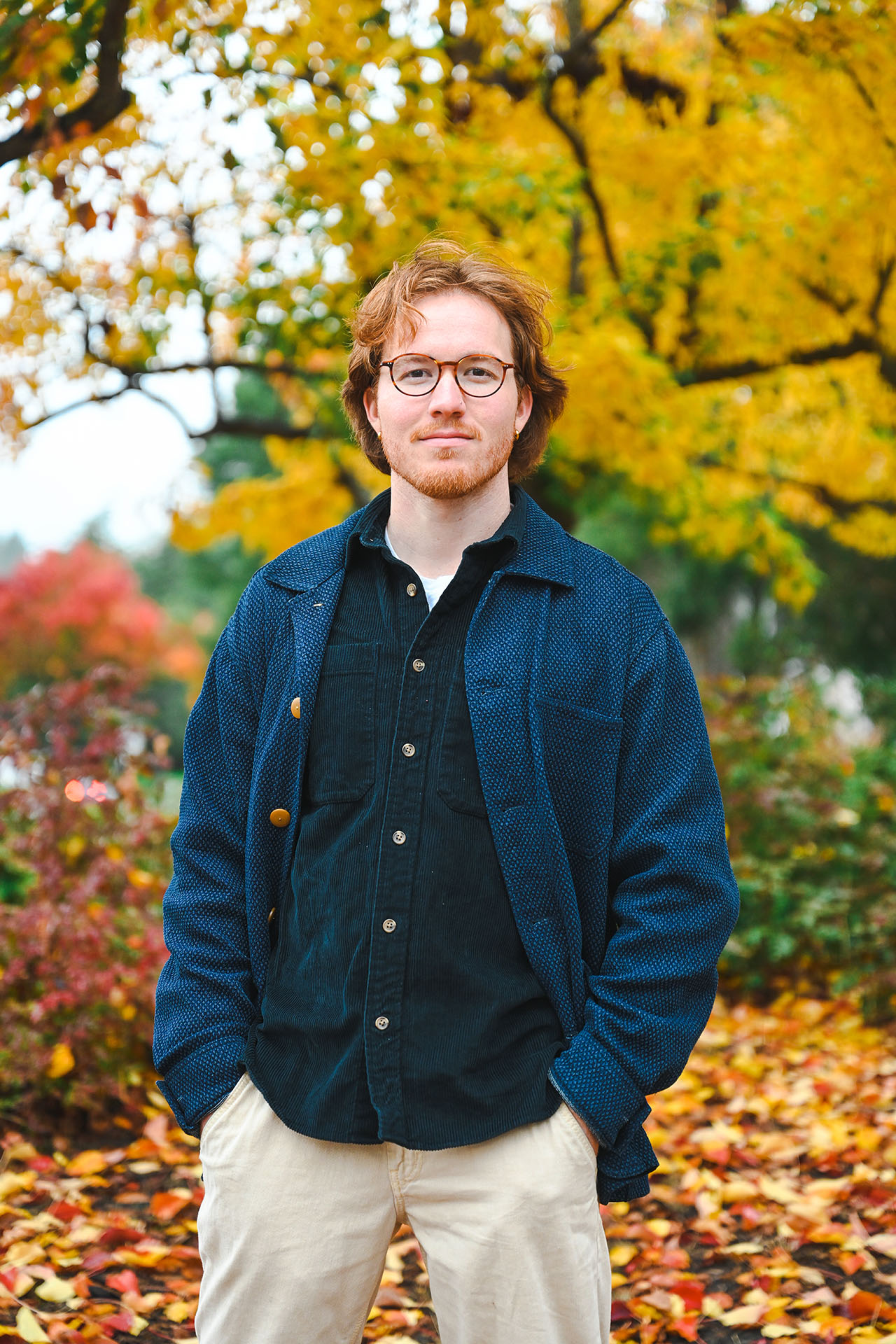
Not just a job: writing as meaning-making
Stewart and Harper join a tradition of servicemembers and veterans who use their writing and other forms of art to make sense of their lives before, during, and after their military service. “The direct link between creative writing—or any artistic practice—and veterans is that art is a meaning-making process,” Harper says. “I was fortunate that my service was pretty survivable, because I know a lot of people who saw a lot of things that would really challenge your ability to make sense out of the world.”
The Department of Veterans Affairs recognizes this valuable aspect of art and offers art therapy as part of PTSD treatment. A number of writing programs, including the Veterans Writing Project and Warrior Writers, were also founded by veterans. “It’s always been known that veterans have used writing as a way to process the things they’ve seen,” Stewart says. “Especially in older generations, it was frowned upon to talk about your experiences, and creative writing was a more discreet way to process those traumatic experiences.”
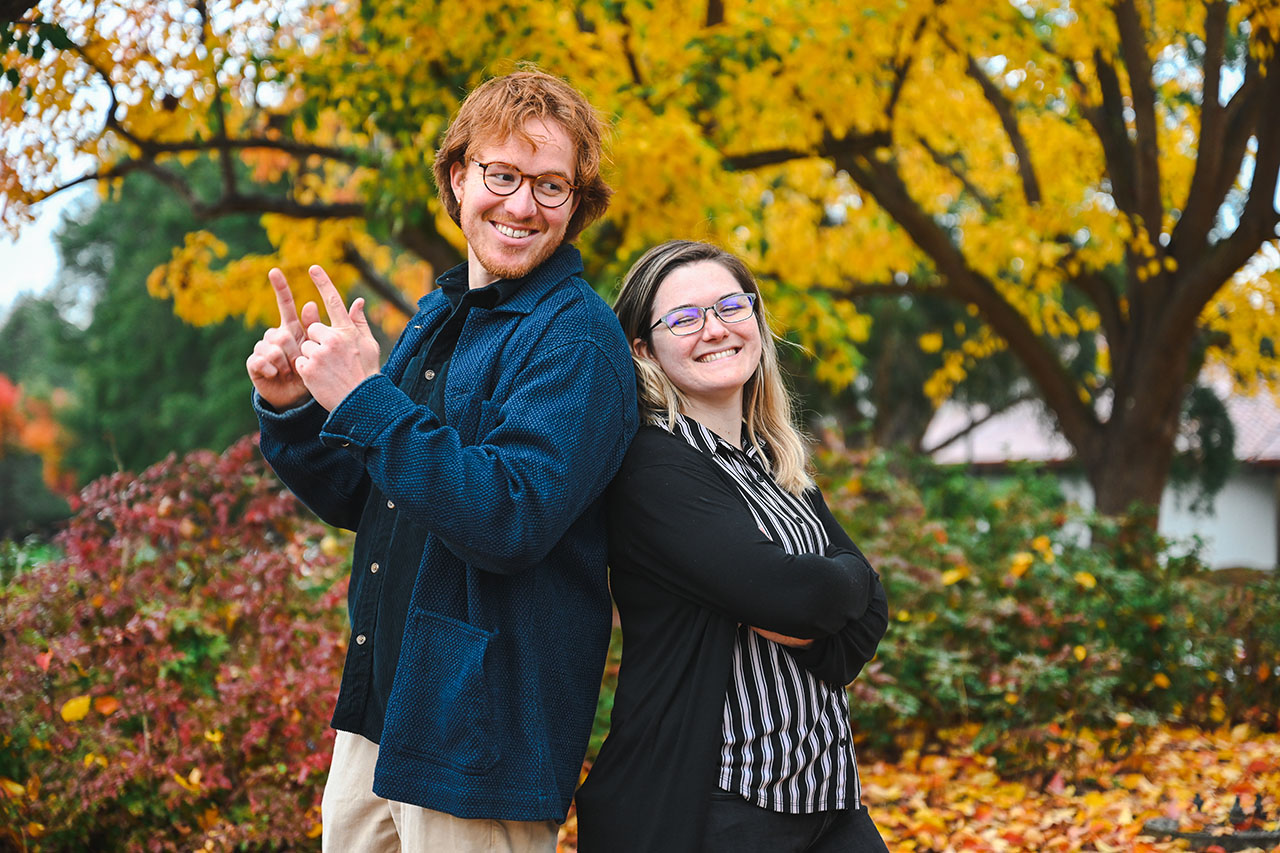
When Stewart and Harper finish the graduate program in Spring 2024, they will bring the literary world their unique experiences as veterans, journalists, non-traditional students, and artists—using their skills to tell their stories, whether they are fiction, nonfiction, or somewhere in between.
After completing her studies in the fiction genre, Stewart plans to pick up nonfiction writing again. “I’ve always loved telling other people’s stories, but I think it’s time to get vulnerable and tell my own,” she says. She also hopes to continue her work with the Veterans Support Services office at Saint Mary’s, helping to connect veteran students with resources and with each other.
As for Harper, “I want my stories to be impactful and illustrate something new that maybe hasn’t been seen or talked about in the military,” he says. “We all have a duty to live a life that we can be proud of within the constraints we exist in. And I know writing will be a part of that for me.”
WRITE MORE: Interested in DEVELOPING YOUR CRAFT? Applications for the MFA Program are open until February 2, 2024. Contact Chris Arnold and Collin Skeen for more information.
Explore the undergraduate major in Creative Writing at Saint Mary’s.
Saint Mary’s Visiting Writer Series: A Chance for MFA Students to Learn from Literary Luminaries
Jordan Sapp MFA ’25 is a graduate editorial fellow with the Office of Marketing & Communications at Saint Mary’s. Write her.